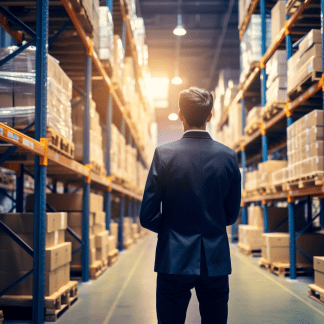Description
How to Excel in Inventory Management with the Best Methods
Inventory management is a crucial component of the supply chain that directly impacts operational efficiency and business profitability. Excelling in this discipline requires a combination of best practices, advanced tools, and a well-thought-out strategy. Here are some proven methods to enhance your inventory management.
Implement Lean Inventory Principles
Lean inventory management focuses on reducing waste without sacrificing productivity. Implement essential lean techniques such as Just-In-Time (JIT) inventory, which ensures materials are only ordered and received as needed for production. This method reduces holding costs and frees up warehouse space.
Employ ABC and XYZ Analysis
Combine ABC classification with XYZ analysis for a more nuanced inventory approach. While ABC classifies items based on their value, XYZ analysis classifies items based on their demand variability. This dual approach allows for more precise inventory control, ensuring that high-value, variable-demand items receive the most attention.
Advanced Forecasting Techniques
Utilize sophisticated forecasting models that incorporate machine learning and AI to predict future demand more accurately. These models can analyze vast datasets and identify hidden patterns, leading to more reliable stock level adjustments. Seasonal trends, promotional impacts, and external economic factors should be integrated into these models.
Optimize Safety Stock Levels
Calculate optimal safety stock levels using statistical formulas that consider both the variability of demand and supply lead times. This approach minimizes the risk of stockouts while keeping excess stock to a lean minimum. Tools like Monte Carlo simulations can be used to model different scenarios and their impact on inventory levels.
RFID and IoT Integration
Invest in RFID (Radio Frequency Identification) and IoT (Internet of Things) technologies to enhance inventory tracking and visibility. RFID tags and IoT sensors provide real-time data on the movement and condition of goods across the supply chain, enabling automated inventory updates and reducing errors in stock records.
Vendor-Managed Inventory (VMI)
Develop partnerships where suppliers manage the inventory levels based on mutually agreed-upon stock levels. This VMI setup reduces administrative burdens and fosters a closer, more collaborative relationship with suppliers, often leading to better pricing and terms.
Continuous Skills Development
Encourage ongoing education and training for inventory management staff. In addition to certifications like CPIM (Certified in Production and Inventory Management), consider workshops on emerging technologies and trends in supply chain management, enhancing the adaptability and skill level of your team.
Enhance Collaboration with Technology
Implement collaborative platforms that connect all departments involved in inventory management. These platforms can facilitate the sharing of data and insights in real-time, enhancing coordination between procurement, sales, marketing, and logistics, and aligning inventory levels with current business needs and projections.
Sustainability Practices in Inventory
Integrate sustainability into inventory practices by optimizing shipment sizes, reducing packaging materials, and choosing environmentally friendly suppliers. This approach not only supports corporate social responsibility goals but also can reduce costs and enhance brand reputation.
Regular Audits and Continuous Improvement
Schedule regular audits to ensure adherence to inventory policies and procedures. Use the insights gained from audits to drive continuous improvement initiatives. Techniques such as Six Sigma can be particularly effective in identifying, quantifying, and eliminating inefficiencies.
Conclusion
Mastering inventory management is a complex but essential task for the success of modern businesses. By adopting these best practices and adapting them to your company’s specifics, you can not only improve operational efficiency but also enhance customer satisfaction and competitiveness in the market.




